
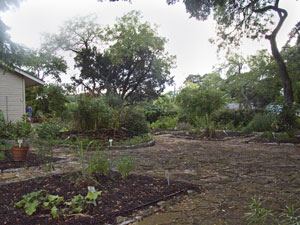
These rectangular beds on the limestone patio were some of the only existing gardens when ABC bought the Case Mill Homestead. Since they are located close to the kitchen door, and ABC tries to do as much as possible by permaculture methods, and one of the tenets of permaculture is that you plant things close to where you are going to use them, these became the culinary gardens.
Chinese

Burdock (Arctium lappa) contains large concentrations of vitamins and minerals, notably iron, and is higher in certain minerals than beets, carrots, potatoes, or turnips. The root is a widely used blood purifier. In China, burdock is considered a strengthening aphrodisiac.
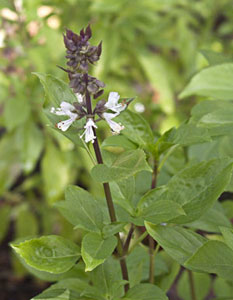
Oriental sweet basil (Ocimum basilicum) comes in a number of varieties that are less robust than the varieties used to make pesto.
French

Garlic chives (Allium tuberosum) have a mild garlic-like flavor that is far more delicate than garlic. The green tops of the plant are used for cuisine, and the clump benefits from frequent snipping. In cooking, garlic chives should be added to a dish toward the end to preserve the flavor.

Bay laurel (Laurus nobilis) has been used as an aromatic, a spice, and a form of honor for centuries. The laurel wreath of the Romans signified victory or was used when commemorating some other event. Bay leaves impart an aromatic scent that becomes stronger when crushed. The flavor is reminiscent of nutmeg and pepper. The flavor of bay leaves is quite strong, often one to two leaves will flavor a medium sized pot of stew. Newly dried leaves have a sweet scent like cloves or cinnamon. The dried leaves are said to be unpleasant to cockroaches and moths.
Indian
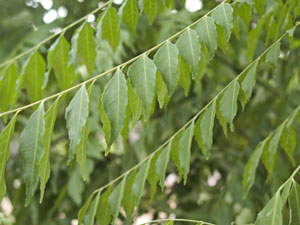
Curry leaf (Murraya koenigii) is used extensively in Southern India and Sri Lanka. The fresh leaf is more desirable as it quickly loses its flavor when dried. Whether used fresh in a curry or fried in butter or oil first, the leaves are usually removed before serving.

Holy basil (Ocimum tenuiflorum), known as “tulsi” in India, has been reported to have endurance-enhancing effects on the body.
Mediterranean
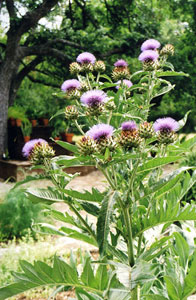
Cardoon (Cynara cardunculus) stalks can be used like celery and have a subtle bittersweet flavor. The root and leaves are also cooked in soups, salads and pasta dishes.
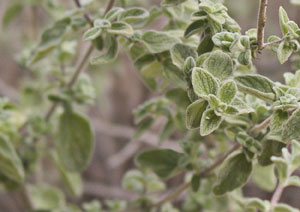
Sweet marjoram (Origanum majorana) has a delicately sweet flavor that is much milder than that of oregano. Cooking destroys the flavor so it is best to add marjoram just before serving or in lightly cooked dishes.
Mexican
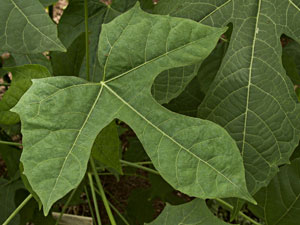
The young tender leaves of chaya (Cnidoscolus chayamansa) are cooked as a potherb. In the Yucatan, the raw leaves are used as wrappers for tamales and sometimes made into filling.
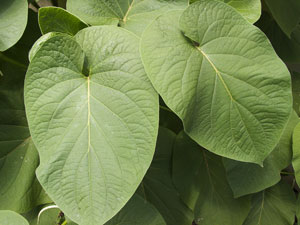
Makulan or acuyo (Piper auritum) is mistakenly called ‘hoja santa’ by many. In Mexican cuisine, the leaves are chopped and used as a spice, or used for wrapping tamales or meat. When bruised or crushed the leaves smell like sassafras due to the large amounts of safrole present in them.

Quilquiña (Porophyllum rudirales) is native to South America. In Bolivia the leaves are used in condiments much like cilantro is used in Mexico.
Middle Eastern

Wild Syrian marjoram (Origanum syriacum) is the key ingredient, along with ground sumac, toasted sesame seeds, and pepper of the spice blend ‘Zaatar’.
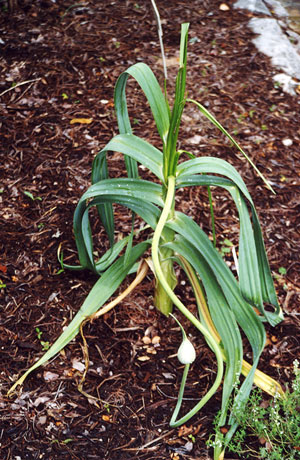
Elephant garlic (Allium ampeloprasum) is not true garlic; it is a leek. Also called great head garlic, it has a milder and sweeter taste than true garlic. Some bulbs of elephant garlic weigh more than one pound.
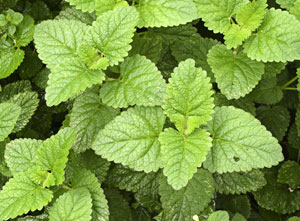
Lemon balm (Melissa officinalis) imparts a lemon-mint, sweet scent and similar flavor when used in the kitchen. The leaves are used to flavor salads, salad dressings and soups. It can be used alone or with other mints to make a refreshing, calming tea.
Southeast Asian

Chili peppers (Capsicum annuum) give a spicy zest to any dish to which they are added. The peppers have an antibacterial and stimulating effect on the body. Chilis, aside from being a key ingredient in many dishes, also stimulate the secretion of saliva and digestive acids.

Thai basil (Ocimum basilicum ‘Thai’) is a variety of sweet basil. It has a sweet anise-licorice aroma and is used in large amounts in red and green curry and spicy stir-fried dishes.

Scarlet mallow (Pentapetes phoenicia) is native to south and Southeast Asia, from India to the Phillipines and the north coast of Australia. While the flowers only last a day, the plant has a long bloom season and produces many blooms at one time. The Indian Materia Medica lists it as a demulcent, astringent, to dispel phlegm and alleviate fever and gas. It is said to be used in Thai cooking.

|